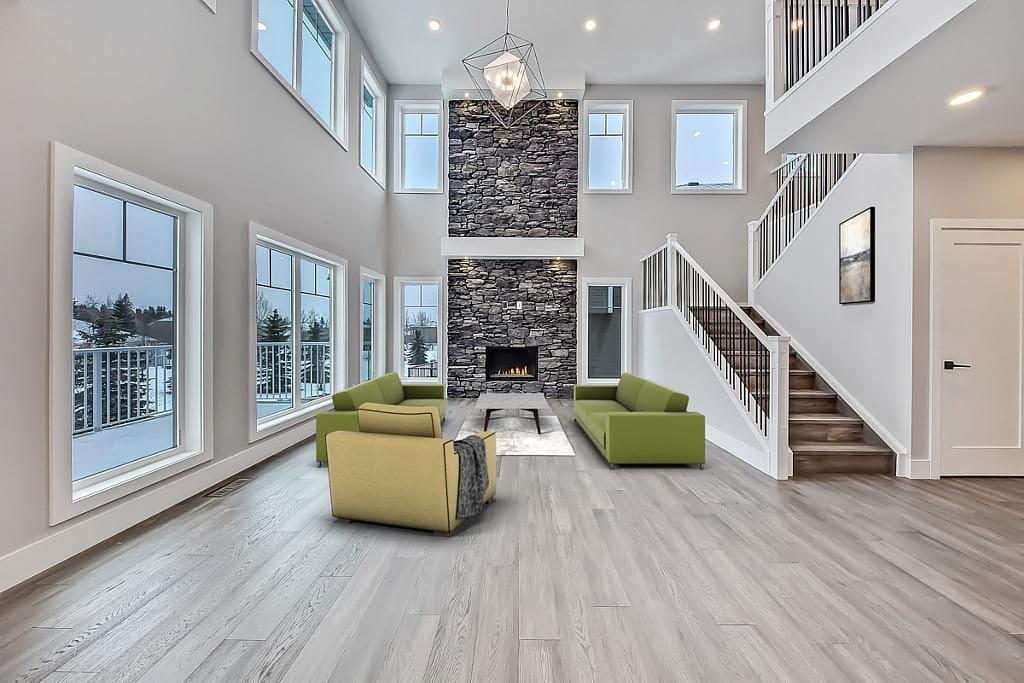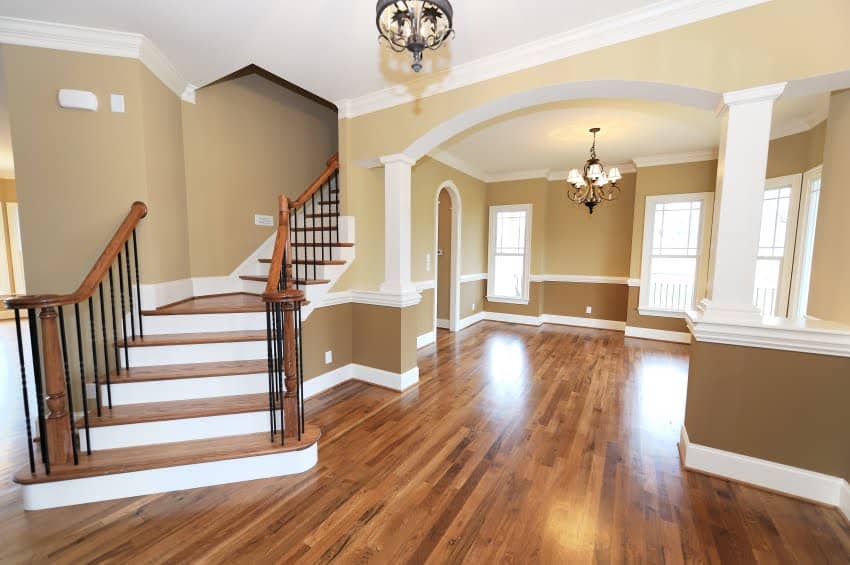How Often Should You Paint Your Home Interior? Ask a Pro

Have you been thinking about getting some painting done?
I’ve been a house painter in Calgary for over 25 years and one of the most common questions is ‘How often should interior walls be painted? Or “How often should I paint my home interior? Or “When should the house interior be painted” Or “How long a should an interior painting job last”?
How Long Should An Interior Painting Job Last?
That question really depends on a number of factors:
- Was it painted professionally?
- Was the prep work done proficiently?
- What quality of paint was used?
- What rooms or areas of the home?
- How were the walls (or doors) cleaned & maintained?
Having your home interior painted by a reputable painting contractor isn’t a guarantee that it will last longer but generally speaking, a good painting company will use better products and will do a better job than your typical DIY painters.
One of the key factors determining better durability is how the walls, doors, and trim were prepped. This may include drywall repairs, caulking gaps and sanding doors, and trim. Using the right bonding primer or drywall sealer for a specific task or substrate is a very important consideration. We often see drywall that was not sealed properly and the result is an uneven appearance of the topcoat. Using a good primer/sealer on new drywall will allow the paint to bond properly to the surface. An example of drywall not being primed is when we repaint ceilings only. We have to poly (plastic) off the walls before painting the ceiling and it’s important to use good masking tape at the top to prevent leakage. When removing the tape after the job is finished we often see the masking tape tear the drywall. This is because the walls were not sealed properly and the paint bond was weak.

Foyer, Entrances, Mud Rooms
Generally speaking, the areas of a home that get the most foot traffic tend to be most vulnerable for wall (or door) damage. In Calgary, the front & back entrances (mud room) may get damaged from dirty boots and shoes. Slamming the door against the wall can do some serious damage too. It’s quite common to see door handles get punched through the drywall because of a broken door-stop. The entrances are often a tight space and get damaged when moving large objects into the home such as new furniture.
Bathroom, Kitchen, Laundry Room
Spaces like a bathroom, kitchen & laundry room are exposed to high humidity and can get mold or mildew growth. We often see this in old bathrooms where there is no exhaust fan vents or poor circulation without windows It’s really important to use good mildew resistant anti-microbial paint for such areas. Most paint manufacturers will sell a “Kitchen & Bath” that includes these antifungal additives. Kitchens are often exposed to grease around the stove or range. A tiled backsplash is best but a good scrubbable Kitchen/Bath paint will afford good protection too. It’s also important to use a good paintable silicone caulking around the sink because of the moisture issues.
Kid’s Bedroom
Kids will be kids! A child's bedroom will often require frequent painting over the years because of the damage they may do to the walls and doors. This may include using magic markers or crayons or fastening posters (or whatever) with pins, nails, thumbtacks or scotch tape.
Benjamin Moore has a new paint called Scuff-X that is very durable. It is a zero VOC paint that, as the name implies, can withstand scuffs from shoes, boots or rough-housing. It was first made for commercial painting applications but we often use it is mud rooms or high traffic areas of a home. It is a bit on the shiny side, so you may sacrifice appearance for durability. We used Scuff-X in a pearl sheen (satin) on the doors and trim of a new house remodel recently.
Rooms That May Require Infrequent Painting
Some rooms of a house will not be subject to as much wall damage as other areas. These may include living rooms, powder rooms, the master bedroom, guest bedrooms, and home offices. Natural obstructions like beds, dressers, desks, and shelves protect the walls. They are also not high traffic areas in most cases. Quality mid-priced paint is a good option for such rooms. Most often a living room will be repainted for aesthetic reasons and when a change is desired. New furniture, carpet or window coverings can clash with the existing paint color so a fresh new paint job is a sensible thing to do.
Yellowing Dirty Ceilings & Woodwork
Ceilings tend to yellow or get dirty over time because of cooking, smoking, natural gas, or dust. We often see this with popcorn ceilings that hadn’t been painted for years. It is not uncommon for the homeowner to paint the walls and ignore the ceiling. This can happen for decades. We do recommend painting the ceilings every 7-10 years or so if you prefer a bright white appearance. One trick designers use is to paint the walls a darker color so the ceiling will contrast and appear whiter than it really is. Using off-white paint when the ceiling is yellowing is not a good look and it will stand out more.
Old doors and trim can yellow too over time. The new acrylic paints are much less prone to yellowing, but we still come across trim that was painted with oil-based enamels. All alkyd paints will yellow over time including the next-gen water-based alkyds sold today. Lack of sunlight in a home speeds up the yellowing process. In the northern hemisphere, the south side of the home gets the most sun exposure.
Slow Color Fading
Colors fade a lot faster outdoors when exposed to the UV rays of the sun. Indoors that process is MUCH slower. It’s true that alkyd paints fade much faster than today's water-based acrylic paints, BUT, they still fade somewhat over time. The fading is so slow that most people will not notice it until you move a piece of artwork or have to touch up a wall with the old paint. Some acrylic paints will resist fading more than others and the quality of color tints is a big factor. So the degree of fading is the exact opposite to the amount of yellowing. Fading increases when exposed to sunlight and yellowing of alkyd paints increases when exposed to frequent darkness or reduced natural light.

When should I paint my house interior?
In conclusion, I can’t answer that...lol Kidding aside, there are just too many variables to determine a single answer for every homeowner. The content above was intended to show how and why house interior painting can degrade over time. Exterior painting, in contrast, is a whole different ball game because of the weather conditions, especially in Calgary.
Moisture indoors can be a problem, so can too much direct sunlight or as in the case of yellowing, a lack of sunlight. Realistically speaking, a good acrylic paint job could last for 10-15 years if the walls remain untouched and in optimal interior conditions. Some rooms like kitchens, laundry, mudrooms, and bathrooms introduce moisture into the equation. This can lead to a number of issues including mold & mildew.
Pets. Dogs and cats can cause damage due to scratching or jumping up on the walls & doors. We repair a lot of front and back doors because of pet damage. Smells from pet urine can get embedded into the floorboard and should to be treated with a special sealer. Same goes for smoke damage due to nicotine or cooking accidents.
To sum up, who would want to live in the same house for more than 10 years with the same color? That might be the bottom line. Wall damage is variable but the majority of my clients get tired of the same paint color in about 10 years. That’s probably the average; 8-10 years for a home interior.
